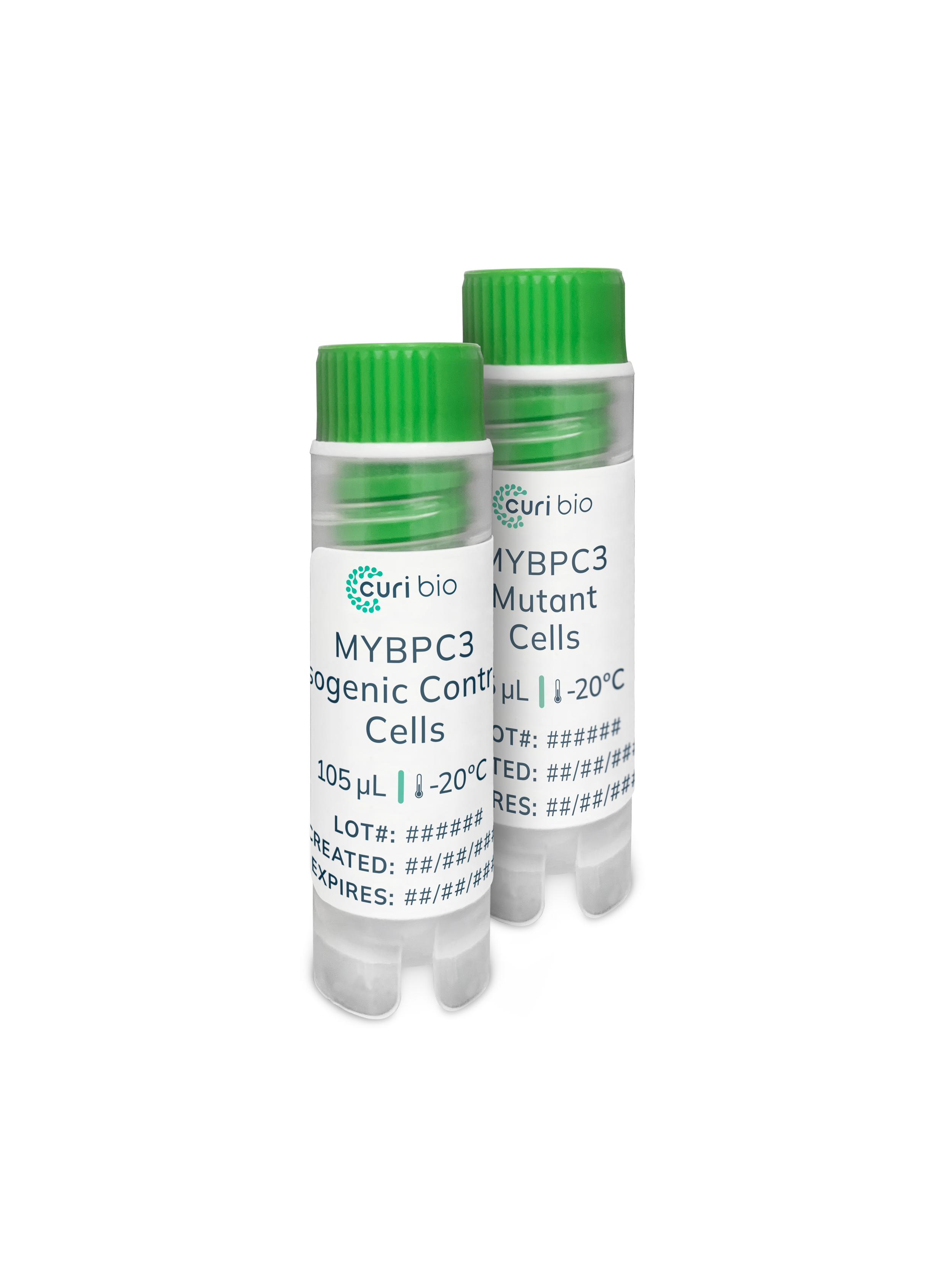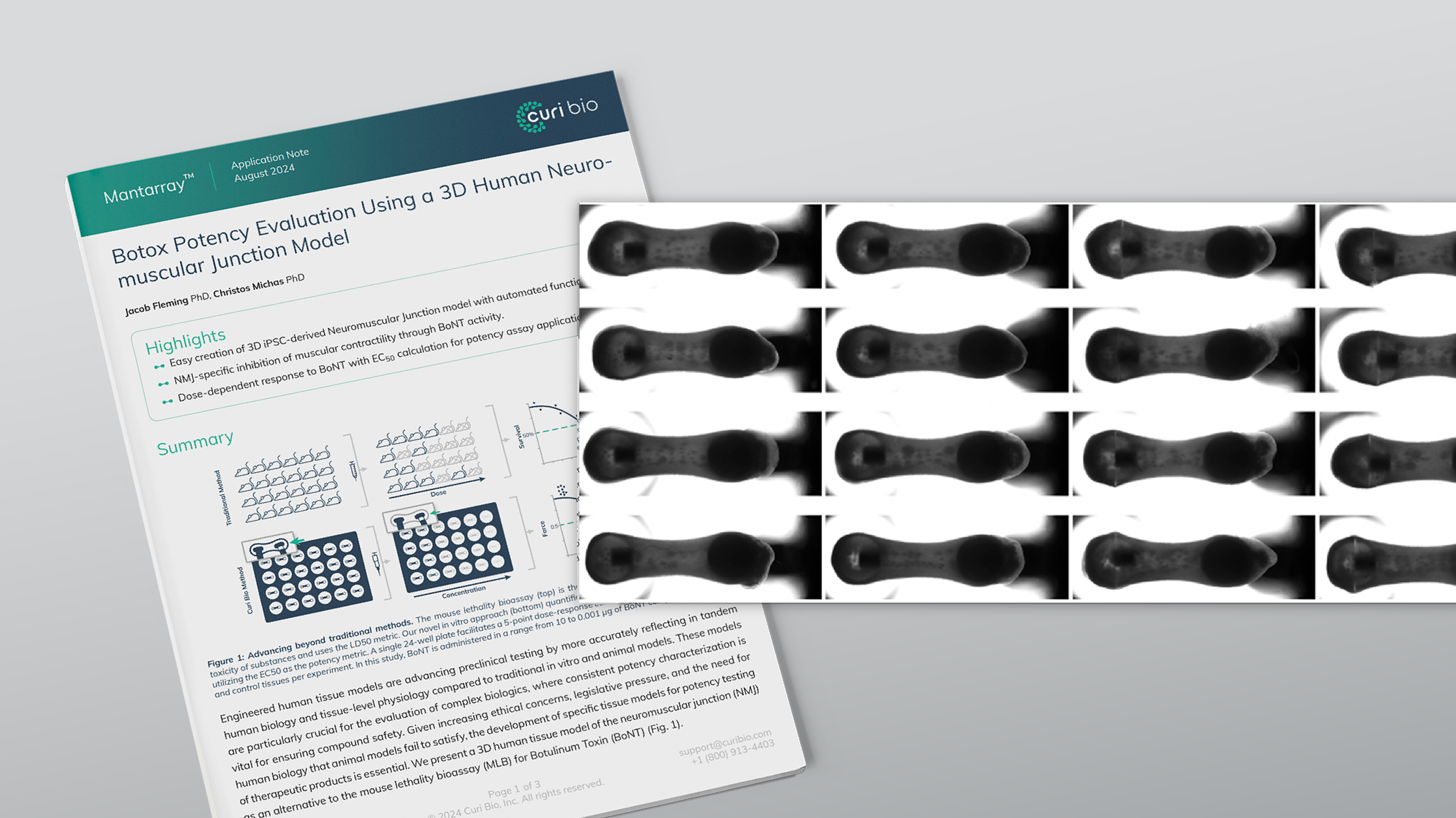Key Disease Phenotypes in Engineered Heart Tissues (EHTs)
Our MYBPC3e6 cardiomyocytes, when modeled as Engineered Heart Tissues (EHTs) on Curi Bio’s Mantarray™ and Nautilai™ platforms, reliably display hallmark HCM phenotypes:
1. Hypercontractility & Calcium Hypersensitivity
The MYBPC3e6 mutant tissues exhibit hypercontractility during EHT maturation when continuously electrically paced. They also show a heightened inotropic response to extrinsic calcium, suggesting an underlying defect in calcium handling or myofilament sensitivity that drives excessive force generation.
2. Impaired Relaxation Kinetics
HCM is fundamentally a diastolic dysfunction disorder. The MYBPC3e6 model demonstrates significantly altered relaxation kinetics that are rescued by the myosin inhibitor Mavacamten, a compound clinically used for HCM treatment.
Relaxation Time: The MYBPC3e6 tissues show a statistically significant increase in the time from Peak to Relaxation 50 compared to the Isogenic Control, indicating slower relaxation.
Pharmacological Rescue: Treatment with 0.1 μM of Mavacamten reverses the slowed relaxation kinetics, restoring the relaxation time to levels statistically similar to the isogenic control.
3. Failure to Maintain Pacing at Low Calcium
Under stress testing, the MYBPC3e6 tissues fail to follow high-frequency electrical pacing, a finding that reflects the impaired chronotropic reserve often observed in HCM patients. This failure is most pronounced at low calcium levels, demonstrating the model's sensitivity to metabolic stress.
Stress Test Failure: At a stimulation frequency of 3.5 Hz, nearly 90% of the mutant tissues fail to follow pacing in 1 mM calcium conditions, whereas the isogenic control remains at 100% following pacing.



